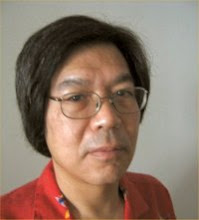Intended to write after the press screening of Lionel Rogosin's "On the Bowery" (new, restored print distributed by Milestone) but time slipped away. Time always seems to slip away now.
I've tried to get back into the swing of things, or at least some of the things in New York City. But it's the usual grind, and it's disconcerting to find oneself in the usual grind. The feeling is rather like having been trapped somewhere, and finally getting to see daylight, only daylight is a little blinding.
I was thinking of "On the Bowery" and how times have changed since i first saw that movie in the late 1960s. A lot of those documentaries/semi-documentaries from the period (including Kent Mackenzie's "The Exiles", or the Joseph Strick-Sidney Meyers "The Savage Eye", or Sidney Meyers' "The Quiet One") were described in terms like "stark"; the black-and-white cinematography caught aspects of the urban (New York or Los Angeles) landscape that had been glossed over in commercial movies, even when those movies were shot on location.
Quite frankly, at the time, those movies (and related movies such as Warhol's "Chelsea Girls" or Shirley Clarke's "Portrait of Jason") were about what we've come to call "abjection", about those people in society who were either marginalized or "downtrodden" (now there's an old-fashioned term from that period). But i guess you could say that the lyricism of those movies came from the depiction of what had been described as the "city symphony", those documentaries in the 1920s which tried to find the poetry in the developing industrialized urban centers (cf. Cavalcanti's "Rien Que les Heures", Vertov's "The Man With a Movie Camera", Paul Strand's "Manhatta", Ruttmann's "Berlin Symphony of a City"). What became obvious was that, by the early 1970s, films shot on location in New York City ("Panic in Needle Park", "Klute", "French Connection", "Born to Win") were showing a city that seemed devastated. (There's some correlation between those movies and the movies made in Europe right after World War II, such as the Italian Neo-Realist movies like "Paisa" and "The Bicycle Thief", or British thrillers like "The Third Man" and "The Man Between.")
Trying to organize my ideas around these topics seems difficult right now, because there's a lot that remains quite inchoate and almost incomprehensible. For example: i've been doing a lot of reading about the Judson Dance Theater, in order to clarify a lot of the points i made in my lecture that i gave in June. But i find that the more i read, the less clear the Judson Dance Theater seems, because i'm finding it hard to remember my own responses. So much is filtered through other people's responses, and i find it hard to assert my own response.


0 Comments:
Post a Comment
<< Home